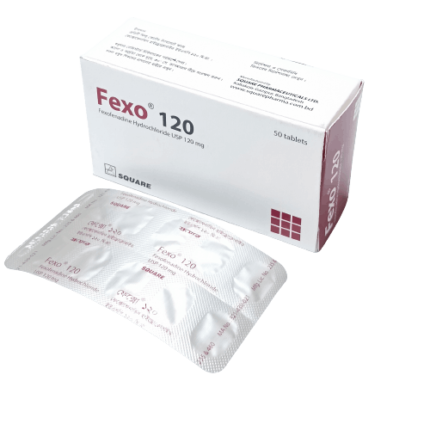Nispore
78.00৳ Bottle (35ml)
- Nispore is an antifungal medication containing Fluconazole, used to treat various fungal infections including vaginal candidiasis, oropharyngeal and oesophageal candidiasis, tinea infections, and onychomycosis.
- It is also indicated for systemic fungal infections, cryptococcal meningitis, and prevention of fungal infections in immunocompromised patients.
- The dosage varies based on the condition and age, with specific adjustments for renal impairment.
- Nispore is generally well-tolerated but may cause mild gastrointestinal side effects and rare skin reactions.
 Brand
Brand
|
Incepta Pharmaceuticals Ltd |
|---|---|
 Generics
Generics
|
Fluconazole |
 Type
Type
|
Powder for Suspension |
Indications
Nispore is prescribed for the treatment of:
- Vaginal Candidiasis
- Oropharyngeal Candidiasis
- Oesophageal Candidiasis
- Tinea infections (Tinea corporis, Tinea cruris, Tinea pedis, and other forms)
- Kerion
- Pityriasis Versicolor
- Onychomycosis (Fungal Nail Infection)
- Invasive Candidiasis and Cryptococcal Infections (including meningitis)
- Prevention of Cryptococcal Meningitis
- Fungal Infection Prevention in Immunocompromised Patients
- Systemic Candidiasis and Cryptococcal Infections
- Superficial Candidiasis
Additional indications:
- Fungal Urinary Tract Infections
- Disseminated Candidiasis
- Prophylaxis for Fungal Infections in Neutropenic Cancer Patients
- Acute Systemic Fungal Infections (e.g., Coccidioidomycosis and Histoplasmosis)
Always consult with a registered healthcare provider before use.
Pharmacology
Fluconazole, a triazole antifungal agent, effectively inhibits fungal cytochrome P-450 dependent enzymes. This enzyme system is essential for synthesizing ergosterol in the fungal cell membrane, making it crucial for combating fungal infections.
Dosage & Administration
Adults:
- Vaginal Candidiasis: 150 mg as a single dose.
- Oropharyngeal Candidiasis: 200 mg on Day 1, followed by 100 mg daily for 14 days.
- Oesophageal Candidiasis: 200 mg on Day 1, followed by 100 mg daily for 14-30 days.
- Tinea Infections: 150 mg weekly for 4-6 weeks.
- Kerion: 50 mg daily for 20 days.
- Pityriasis Versicolor: 400 mg as a single dose.
- Onychomycosis: 150 mg weekly for 12 months.
- Invasive Candidiasis and Cryptococcal Infections: 400 mg on Day 1, then 200-400 mg daily orally or via IV infusion.
- Prevention of Cryptococcal Meningitis: 200 mg daily orally or by IV infusion.
- Prevention in Immunocompromised Patients: 50-400 mg daily orally or by IV infusion.
Children (Over 1 Year):
- Superficial Candidiasis: 1-2 mg/kg daily.
- Systemic Candidiasis & Cryptococcal Infections: 3-6 mg/kg daily.
For life-threatening infections, doses of up to 12 mg/kg daily can be given to children aged 5-13 years (max. 400 mg/day).
Dosage for Children (1–6 years):
- 1 year (9 kg): ½ measuring spoonful
- 1–2 years (12 kg): 1 measuring spoonful
- 2–3 years (14 kg): 1½ measuring spoonful
- 3–4 years (16 kg): 2 measuring spoonfuls
- 4–6 years (20 kg): 2½ measuring spoonfuls
Use in Specific Populations:
- Elderly: Standard dosage unless renal impairment is present.
- Renal Impairment: For multiple-dose therapy, adjust the dosage intervals:
- Creatinine Clearance >41 ml/min: 24-hour intervals
- Creatinine Clearance 21-40 ml/min: 48-hour intervals
- Creatinine Clearance 10-20 ml/min: 72-hour intervals
- For dialysis patients: One dose post-dialysis session
Drug Interactions
Fluconazole may interact with several medications, including:
- Warfarin: Fluconazole may increase prothrombin time, so monitoring is advised.
- Sulfonylureas: Fluconazole may enhance the effect of sulfonylureas in diabetic patients.
- Hydrochlorothiazide: May increase fluconazole plasma levels.
- Phenytoin: May increase phenytoin levels to clinically significant levels.
- Rifampicin: May reduce fluconazole levels, requiring dose adjustments.
Contraindications
Fluconazole should not be used in patients with hypersensitivity to Fluconazole or related triazole compounds.
Side Effects
Nispore is typically well tolerated. Common side effects include gastrointestinal issues such as nausea, abdominal discomfort, diarrhea, and flatulence. Rare side effects may include rash, and in rare cases, anaphylaxis.
Pregnancy & Lactation
Fluconazole may cause fetal harm in animal studies at doses far exceeding therapeutic levels. It should not be used in pregnancy or women of childbearing potential unless necessary contraception is used.
Precautions & Warnings
Use with caution in patients with liver, kidney, hematologic, or biochemical dysfunctions. Hepatic necrosis has been observed in patients with severe underlying conditions. If liver enzymes rise significantly, treatment should be reassessed.
Exfoliative skin reactions such as Stevens-Johnson Syndrome or Toxic Epidermal Necrolysis have been reported, especially in AIDS patients. Discontinue use if rash occurs and monitor closely for severe reactions.
Use During Lactation
Fluconazole is present in breast milk, so its use is not recommended during lactation.
Driving & Machinery
Fluconazole is unlikely to impair the ability to drive or operate machinery.
Use in Special Populations
- Elderly: No dosage adjustment unless renal impairment is present.
- Renal Impairment: Adjust the dosage based on creatinine clearance as described earlier.
Overdose Effects
In case of overdose, supportive care and gastric lavage may be appropriate. Fluconazole is mainly excreted through the urine, and diuresis can enhance elimination. Hemodialysis can reduce plasma levels by 50%.
Therapeutic Class:
Antifungal Drugs for Mycoses Treatment
Storage Conditions
Store in a dry place, away from light and heat. Keep out of reach of children.













Reviews
There are no reviews yet.